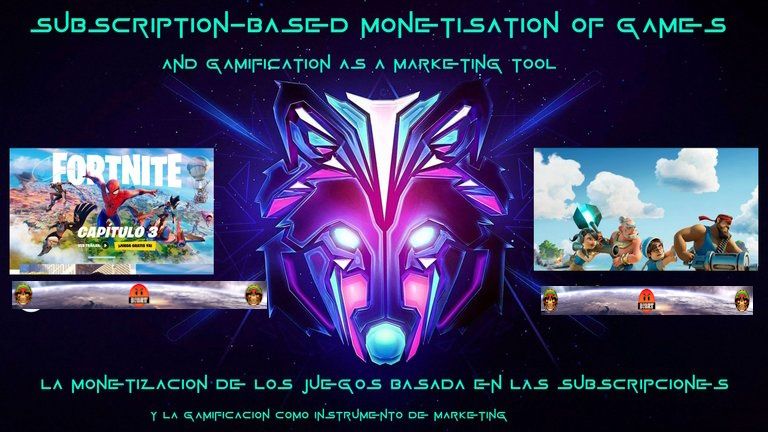
If we look at the gaming industry, we observe that a real and proper revolution is taking place over the last few years in relation to how to monetise gaming in its different expressions. Moreover, games on social networks are available to everyone and are available on different mobile platforms. This has created a very attractive market from a monetisation point of view and one that is constantly growing.
Until not so many years ago, the video games sector, after having left its initial free start especially in the free and open source software models (commonly called open source), moved to a subscription-based model, which consisted of an initial payment followed by a monthly subscription. Perhaps because the free model was still alive in the minds of many gamers, this system did not decay immediately and the different platforms had to adapt to the demands of a market that was looking for free games above all.
Thus, this business model based on an initial subscription changes to one that offers a free trial version and the so-called freemium models, a mixture of free and premium, i.e. a marketing strategy that basically consists of offering a basic version of one's own product for free at the beginning (especially one's own software) and, eventually, offering additional functionalities in exchange for a payment system.
The notable increase in mobile gaming and the wide range of offerings that are appearing in the sector on a daily basis led to the emergence in 2020 of the subscription model as a monetisation tool, a trend that will continue in 2022.
It is not a new trend but it is a trend that will become stronger in the coming years, driving game developers (not only multinational gaming companies but also independent developers) to earn money through subscriptions, as for example happens with Fornite, a free Battle Royale with a lot of different game modes for any type of player, a business model in expansion that has more and more followers every day.
Actually the game developed by Epic Games was launched with up to 100 players fighting on an island, in spaces that get smaller and smaller, until there is only one person or team left standing, and Fortnite: Save the World, which is another software package that consists of cooperative play for up to four players and where you fight against various creatures.
To these we have to add the Creative Mode which is nothing more than the customisation of the game in which the player can build their own island with friends the way they want.
A new model to commercialise the games.

This new business model for the commercialisation of games, despite the initial uncertainty, immediately generated a worldwide business, selling more than five million copies in a few weeks.
Today, many games have followed the Fornite model, especially those related to mobile. In different aspects of the game, trying to make the most of every occasion, for example the option of eliminating ads.
Something that already existed in the platform on other platforms and not only in mobile games. Some blogging platforms allowed the use of their templates on condition that the original credits and advertising were left behind. Otherwise they were transformed into paid applications. Advertising, in this case random, is replaced by fixed income from subscriptions, which apparently gives a better income, especially since advertising (Ads) with AdSense at the forefront has greatly reduced the monetisation of content of any kind.
Something similar happens with Boom Beach, a strategy game for mobile phones, which combines on the one hand attacks against other players and on the other hand attacks against bases automatically generated by the game. This game is not new either (it was developed by Supercell in 2013) and yet the payment system for unlocking and collecting new troops, reinforcements and vehicles among other things is gaining momentum. For example, if you have the instant training subscription, the reserves will always be full.
Much of this revenue is generated secondarily as VIP access to the game, as it is used as a complementary way to spend money, along with the in-app purchases that can be made.
YouTube itself intends to make the leap into the gaming sector in 2022 with the YouTube Gaming tool having already invested more than $100 million in "Shorts" in an attempt to gain market share over Twitch, its main opponent in this sector.
YouTube's idea is really to make gaming an integral part of its business, trying to dethrone Twitch from the streaming world and move further and further away from Facebook Gaming. With more than 800,000 million views directly related to video games in the last year, 90 million hours of live streaming and more than 250 million video game videos, it has all the cards in its hand to do so.
Gamification as a marketing tool.

In Boom Beach you will have to explore a huge tropical archipelago full of dangers and treasures. /
To carry out an adequate monetisation of the game, either through the direct subscription system, or through the freemium system, it is of fundamental importance to identify the segment to which the players belong, how they play, the propensity to buy, the degree of incentive that each player can have to carry out or achieve certain actions, in other words, everything that in the games sector is known as gamification.
With gamification it is also possible to introduce elements aimed at creating player loyalty, as already exists at the consumer level in supermarkets and other consumer businesses, by means of cards, tables, badges, trophies or credits that reward the behaviour that is to be encouraged.
The main obstacle presented by this idea (and which in the future may be completely overcome with 5G technology) is the huge database required to sustain such a large volume of information, where the fundamental premise is to interpret the data in real time, requiring a flow of information that current networks - especially wireless - are currently unable to fully support, with rare exceptions.
By handling this real-time data set across a broad spectrum of structured possibilities, we can aggregate additional data at any time and make it immediately available for analysis, segmenting a player base and assigning it a real-time propensity, thus enabling us to design the desired product and marketing strategy on an individual basis. As well as understanding the reasons why a player leaves the game - something very common - and another player - for example - with a very similar profile continues to play, thus optimising player retention.
In this aspect and within the video games industry, the mobile games sector and the so-called social games have been true pioneers in the adoption of this type of technology for their databases, analysis and data mining solutions, many of them boosted by the advent of cryptocurrencies and their direct application in the real economy that will allow in the near future to discover behaviours of both the player and the spectator, being key in the development of the gaming industry.
0 commenti:
Post a Comment